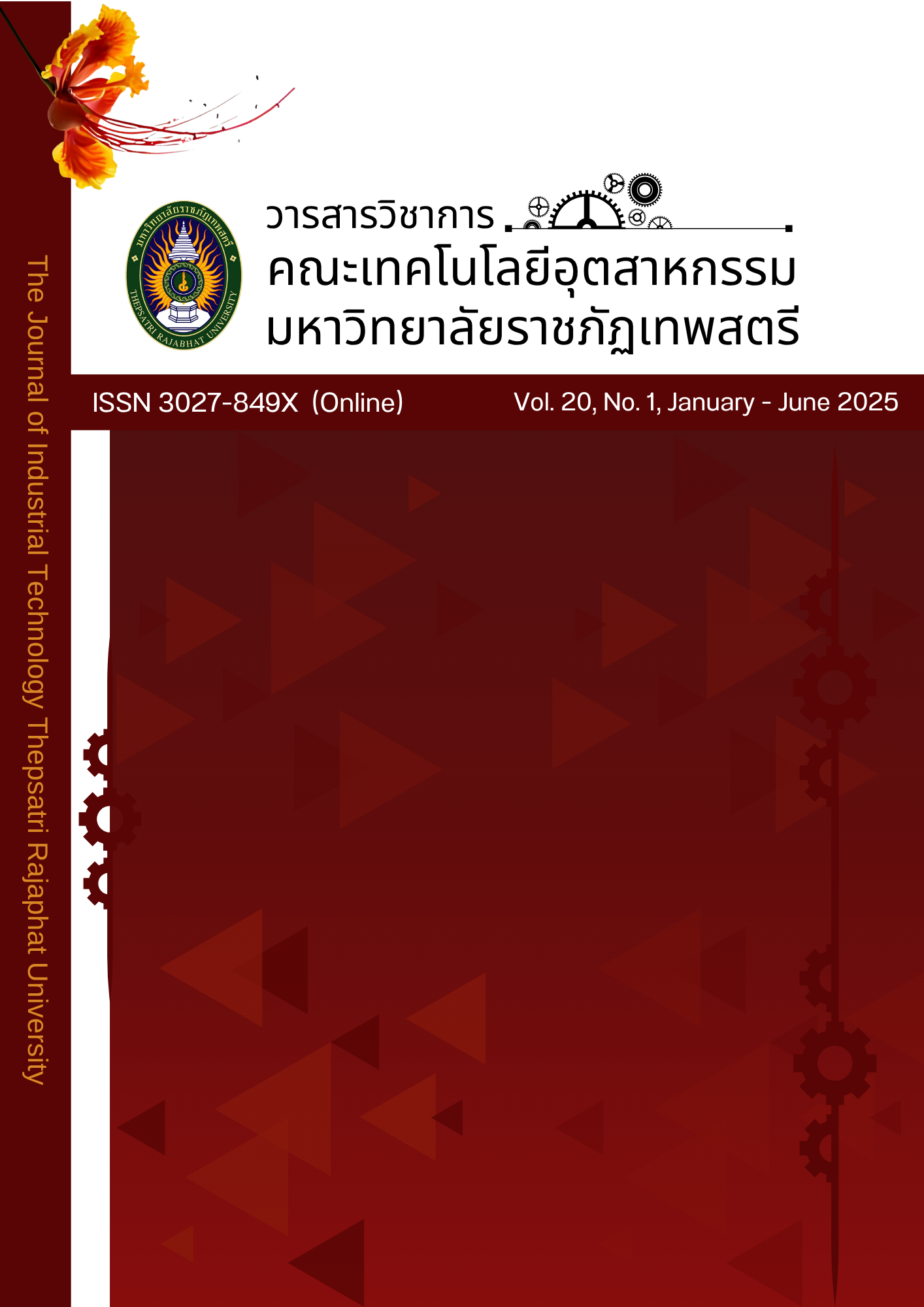การเพิ่มประสิทธิภาพการผลิตโรตารี่พรวนดินด้วยการประยุกต์ใช้ระบบการผลิตแบบลีน กรณีศึกษา บริษัท สิริวัฒนาโลหะกิจ จำกัด
Enhancing Rotary Tiller Production Efficiency Through the Application of Lean Manufacturing
Abstract
บริษัท สิริวัฒนาโลหะกิจ จำกัด เป็นผู้ผลิตชิ้นส่วนและประกอบเครื่องจักรกลเพื่อการเกษตรในจังหวัดอุดรธานี ปัจจุบันได้รับใบสั่งผลิตโรตารี่พรวนดินจำนวน 2,100 เครื่องต่อปี แต่สามารถผลิตได้เพียง 1,500 เครื่องต่อปี ทำให้ต้องมีการทำงานล่วงเวลา ส่งผลให้ต้นทุนการผลิตสูงขึ้น งานวิจัยนี้มีวัตถุประสงค์เพื่อปรับปรุงกระบวนการผลิตโดยประยุกต์ใช้ระบบลีนเพื่อลดความสูญเปล่า จากการเก็บข้อมูลพบว่าสายการประกอบโรตารี่เกิดความไม่สมดุล โดยสถานีประกอบ 1 และ 2 มีรอบเวลาสูงกว่าจังหวะความต้องการของลูกค้า ผู้วิจัยจึงใช้แผนผังสายธารแห่งคุณค่า และแผนภาพก้างปลา ร่วมกับเทคนิคการตั้งคำถาม "ทำไม ทำไม" เพื่อวิเคราะห์หาสาเหตุของปัญหา จากนั้นออกแบบอุปกรณ์โต๊ะประกอบเฉพาะสำหรับสถานีประกอบ 1 และอุปกรณ์ป้องกันการหดตัวของชิ้นงานในขั้นตอนเชื่อมของสถานีประกอบ 2 ผลการปรับปรุงพบว่าสามารถลดรอบเวลามาตรฐานของทั้งสองสถานีงานให้ต่ำกว่าค่าจังหวะความต้องการของลูกค้า ส่งผลให้ประสิทธิภาพการผลิตเพิ่มขึ้นจาก 70.42% เป็น 100% การผลิตต่อวันเพิ่มขึ้นจาก 5 เครื่องเป็น 7 เครื่อง หรือคิดเป็น 28.57% นอกจากนี้ยังสามารถสร้างมาตรฐานการปฏิบัติงานให้พนักงาน ลดความสูญเปล่า และเพิ่มขีดความสามารถในการแข่งขันกับคู่แข่งที่ผลิตสินค้าประเภทเดียวกัน (300)
References
E. Ozcan and S. M. Islam, “A new productivity measurement framework for manufacturing systems,” Int. J. Prod. Econ., vol. 228, p. 107735, 2020.
S. Yang, “Research on the efficiency improve- ment of human-machine collaboration in manufacturing production process,” Front. Bus. Econ. Manag., vol. 16, no. 1, pp. 355–360, 2024.
J. P. Womack and D. T. Jones, Lean Thinking: Banish Waste and Create Wealth in Your Corporation, 2nd ed. New York: Productivity Press, 2019.
O. Honcharenko, “Efficiency of business processes based on lean production technologies,” Nauk. Vìsnik Sìversìnì, Ser. Educ., no. 02, pp. 51-56, 2024.
M. Rother and J. Shook, Learning to See: Value Stream Mapping to Add Value and Eliminate Muda, 1st ed. Brookline, MA: Lean Enterprise Institute, 1999.
M. Salwin, K. Pszczółkowska, M. Pałega, and A. Kraslawski, “Value-stream mapping as a tool to improve production and energy consumption: A case study of a manufacturer of industrial hand tools,” Energies, vol. 16, no. 21, p. 7292, 2023.
M. P. Groover, Automation, Production Systems, and Computer-Integrated Manufacturing, 5th ed. Hoboken, NJ: Pearson, Oct.2020.
O. M. Senaras, S. Inanc, and A. E. Senaras, “Optimization of assembly line balancing via response surface methodology and discrete event simulation,” J. Soc. Environ. Manag., vol. 18, no. 12, pp. 1–15, 2024.
Y. Zhang, Z. Cheng, and X. Liu, “Application of IoT for quality control in manufacturing,” J. Manuf. Syst., vol. 56, pp. 100-248, 2020.
N. A. Mahbubah and M.Jufriyanto, “ Pening -katan kualitas sablon kaosdengan menggunakan metode seven tools of quality: Studi kasus di workshop sablon Thinkthinggs.co,” J. Surya Teknika, vol. 10, no. 2, pp. 123-135, Apr.-Jun. 2023.
S. I. Zaman, S. A. Khan, and A. Gunasekaran, “Unraveling the dynamics of lean manufacturing enablers on operational performance,” Int. J. Qual. Reliab. Manag., vol. 41, no. 1, pp. 1–37, 2024.
A. Bressan, “The use of electronic Kanban for job order management: The case of BNP Srl,” Master’s thesis, Univ. Padua, Padova,2024.

